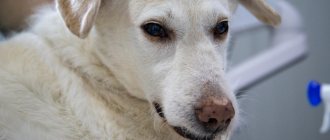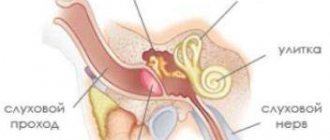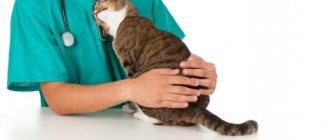When a pet is sick, its owner also suffers. Especially if the cat is vomiting. Of course, at such a moment you want to help your pet as quickly as possible, to alleviate his suffering. However, it should be understood that vomiting acts as a kind of protective reflex of the body. Using this process, harmful substances are removed. It is important to take into account that vomit often differs in composition and appearance. The presence of yellow liquid should be a cause for concern.
Of course, self-medication in such a situation is inappropriate. You should immediately rush to an experienced veterinarian. He will conduct a full examination of the animal and determine the cause of the disease. True, at the first urge to vomit, you should not rush to the doctor. However, if vomiting occurs for several days in a row, or the animal experiences frequent spasms, then urgent consultation with a specialized specialist is necessary.
Types of cat vomit
Even if a cat vomits on upholstered furniture or carpet, you should not scold it. It is advisable to consider vomit. After all, they will allow us to determine the root cause of the corresponding phenomenon:
- Vomiting with pieces of undigested food is a sign that the animal dined too quickly and greedily and swallowed the food whole. In this case, vomiting will not recur. But if this happens often, you should consult a doctor with your pet. After all, belching can be a sign of the development of gastritis, pancreatitis or stomach ulcers. In addition, it can signal intestinal obstruction.
- Vomiting with blood impurities indicates the presence of damage directly in the gastrointestinal tract. Brownish streaks in the vomit are a sign of bleeding in the intestines or stomach. This can occur with a tumor, ulcer, or wound. It is unacceptable to ignore such a situation. After all, such vomiting is dangerous for the life of the animal. Consequently, the cat must be immediately taken to a specialized medical facility or a doctor must be called to the house. Timely treatment will help avoid serious consequences.
- Single vomiting with white foam or clear liquid may occur on an empty stomach in the morning. The foamy mass is formed by mucopolysaccharides and proteins mixed directly in the stomach. Vomiting, which is repeated several times, signals an inflammatory process in the digestive tract. This may be due to a certain infection. If it is not possible to go to a veterinary clinic, it is recommended to call a doctor at home. Before his arrival, give the cat activated carbon or smecta. In some cases, such vomiting indicates food poisoning.
- Vomit of a rich yellow color is the result of indigestion or the presence of liver ailments. Therefore, it is important not to give your cat food that is stale or too fatty. However, in some cases, the yellow color of vomit is due to the consumption of dry food, which contains all kinds of dyes.
- Vomiting with a greenish color may appear due to bile, if there are problems with the gallbladder. In such a situation, immediate hospitalization is necessary. However, sometimes an animal vomits a green mass if it eats large quantities of fresh greens.
By determining the color of an animal's vomit, you can understand what is causing the vomiting and how urgently the pet needs treatment.
What to do for prevention
Cat owners who are faced with a situation such as yellow vomiting ask their veterinarian how they can prevent the recurrence of a complex ailment. Below are the basic preventive measures that every pet owner should know.
- The pet's diet must be balanced. You should buy only high-quality food for cats. It is advisable to use natural products for a kitten.
- There should always be clean drinking water in your cat's bowl.
- Raw meat and fish have no place in the furry diet.
- To store medicines and household chemicals, it is worth choosing places inaccessible to animals.
- It is important to promptly vaccinate pets against infectious pathologies.
- Every 6 months, kittens and cats need to be prevented from worms.
- The cat's fur should be systematically combed with a special comb, which will prevent clogging of the stomach with hairballs.
- Small objects and parts should be removed from the floor away from the cat to avoid swallowing a small object.
Vomiting bile is quite dangerous
If vomiting with bile occurs, it is important to monitor the cat's condition. A one-time urge to vomit should not be scary, but a systematic urge to vomit will be a reason to immediately contact a veterinarian. If, when transporting to a doctor, there are concerns that the cat may vomit, it is advisable to use a plastic carrier.
Why does my cat vomit yellow liquid?
Vomiting in a cat is a protective mechanism whose task is to cleanse the body of foreign substances. Pet owners cannot always determine the root cause of yellow vomit on their own. Therefore, in most cases it is advisable to contact a specialized specialist.
Malnutrition or, conversely, overeating can disrupt the digestive process of an animal. For example, if a cat falls asleep hungry, its stomach is empty all night - in this case, there is a high probability of morning vomiting. A full stomach can occur due to the consumption of large amounts of food. Then the food simply will not enter the intestines and will travel in the other direction. In addition, food poisoning is a common cause of vomiting.
In some cases, vomiting is accompanied by severe discomfort in the animal. This may be caused by ingestion of a foreign object. If it is small, it will come out in the feces. But with large dimensions of the object, active production of bile acids in the stomach will begin. Vomiting of yellow foam often occurs after excessively sudden changes in diet, with a sharp increase in caloric content of food. The cat's liver may not respond immediately to other feeding conditions. As a result, undigested food and yellow liquid will be observed in the vomit.
Vomiting with bile can also be caused by the presence of helminths. This is how the body tries to get rid of the presence of worms. Yellow vomiting is not uncommon in chronic diseases of the liver, gallbladder, and intestines. The negative impact of infectious pathological diseases and the penetration of foreign viruses or bacteria also affects. As a result, the animal’s liver will actively cleanse the body of toxic substances. The most common and dangerous cause of vomiting is considered to be feline distemper or panleukopenia.
Yellow foamy liquid signals the development of various ailments. However, it is important to take into account additional symptoms that accompany vomiting. With hepatitis, the cat's body temperature rises, appetite decreases, urine darkens, diarrhea and yellowness of the mucous membranes occur. If vomiting yellow liquid has a sharp, unpleasant odor, this may indicate liver failure. Moreover, this is how not only the acute, but also the chronic form of the disease manifests itself. An unpleasant odor from the mouth, frequent fainting, yellowing of the sclera, nausea are signs of the development of serious pathological processes in the liver.
Vomiting yellow foam is a symptom of lipidosis, which is also accompanied by rapid exhaustion of the animal, accumulation of toxic substances directly in the liver, and complete loss of appetite. With feline distemper, the temperature rises sharply to high levels, and the pet becomes apathetic. He is haunted by frequent vomiting, diarrhea accompanied by a pungent odor, and the disease is also indicated by a hunched posture, lack of thirst and appetite.
Of course, it is unacceptable to ignore such manifestations. Only timely medical intervention will help avoid many unpleasant complications.
Other symptoms
With pathological internal disorders, in addition to the fact that the cat burps yellow liquid with foam, other symptoms may appear, for example:
An additional sign of internal pathology in an animal may be its apathy.
- increased body temperature;
- refusal to eat;
- weight loss;
- the presence of mucus and blood particles in the stool, the urine becomes dark;
- diarrhea or constipation;
- cachexia;
- yellowing of the mucous membranes of the mouth, whites of the eyes;
- tachycardia;
- apathy, weakness, fainting.
The animal looks sad and depressed. If he feels very bad, in addition to refusing food, the cat stops drinking water. As a result, the water-electrolyte balance is disrupted, which in turn leads to chronic renal failure (CRF). If you do nothing and don’t help your pet at this stage, he may die from intoxication and complications.
When a pregnant cat vomits yellow liquid on an empty stomach but generally behaves as usual, this is most likely a symptom of toxicosis. It is important to constantly monitor the cat and change the diet to include easily digestible, fortified food. But if during pregnancy the animal vomits a clear liquid with yellow, green and red inclusions, you should not hesitate to visit the veterinarian.
What causes the yellow color?
The yellow color of vomit in cats is due to the presence of bile in the corresponding secretions. If a pet has no health problems, then bile acids are not found in the stomach. They appear in pathologies of the duodenum. Vomiting yellow liquid is often life-threatening for the animal. Bile secretions provoke severe irritation of the gastric mucosa. This is fraught with the formation of all kinds of inflammatory processes.
The yellow color of vomit is a direct indicator of bile reflux directly into the stomach. This symptom is characteristic of diseases of the small intestine, hepatitis, gastroduodenitis. It is important to understand that each owner is responsible for the health of their own pet. Therefore, in order to avoid an irreparable situation, it is advisable to follow preventive measures and monitor the mood and condition of your pet.
What does the appearance of vomiting and blood in the stool indicate?
Bloody feces are quite common in cats. Common causes include constipation if your pet eats too much dry food. Prolonged defecation leads to constipation, and hence blood in the stool. In this case, it is worth reviewing the diet, and the pet’s stool will return to normal.
If your cat has yellow vomiting and bloody feces for a long time, you should be wary, as this may indicate a dangerous disease.
This is often how a disease called hematochezia manifests itself. It is accompanied by heavy bleeding in the lower intestine. Many people confuse it with melena, but with this pathology the stool is black. Hematochezia is accompanied by apathy of the pet; he refuses food and water, and also often runs to the toilet. If you have these signs, you should immediately contact your veterinarian.
First aid for an animal
If the animal continues to feel unwell, you need to make the cat drink a lot of water. After all, vomiting provokes severe dehydration. Drinking plenty of fluids will not stop gagging. Therefore, every half hour the animal needs to be given a new small portion of water. But you should refuse to eat. It is advisable to observe a fasting regime during the day. You cannot treat a cat yourself using antiemetic drugs that are intended for humans.
It is important to understand that if vomiting does not go away within 24 hours, you need to take your pet to the appropriate veterinary clinic. Otherwise, there is a high risk of losing your pet due to severe and rapid dehydration. Only timely medical intervention will help restore the cat’s health.
When should you take your pet to the vet?
Specialists strongly recommend that you stop self-medicating a cat that continues to vomit. In most cases, you should consult an experienced doctor immediately. A competent veterinarian will examine the animal and identify the root cause of vomiting. If at home a person tries to fast the animal, but the latter’s condition does not improve, and the frequency of vomiting, on the contrary, increases, then the cat needs to be taken to the hospital. This must be done immediately in the following cases:
- The cat doesn't eat all day. Most often this signals a serious illness. Foamy vomiting along with lack of appetite are the first signs of liver lipidosis. In the absence of medical intervention, this pathology leads to death.
- It is also important to take into account the frequency of vomiting. If vomiting is one-time, then most likely the animal’s condition will stabilize over time. But it is necessary to observe the animal, to determine how strong the pet’s thirst is. If your cat is vomiting and drinking a lot of fluids, it means there are problems with the kidneys.
- If thirst is increased, the pet constantly gushes water, but practically does not go to the tray, there is a high probability that the animal’s urinary tract is blocked due to parasites or stones. In the absence of urgent surgical intervention, the pet is doomed.
If your cat's behavior seems abnormal, despite the fact that she looks fine, it is best to take the animal to the veterinarian. A visit to a specialized specialist will not be superfluous. A responsible and attentive attitude of the owner will help maintain the health of his pet.
Especially for – Ira Romaniy
Treatment
Treatment methods depend on the nature of the pathology. To eliminate dehydration, the cat is given IV drips. In case of poisoning, sorbents are prescribed to remove toxins from the body.
Medicines
If the examination reveals an infectious disease, the doctor prescribes a course of antibiotics. For persistent profuse vomiting, antispasmodic and antiemetic medications are prescribed. Drugs are prescribed to treat identified diseases of the liver, gallbladder, stomach or intestines.
Diet
One of the main conditions for successful treatment is adherence to the diet recommended by the doctor. For several days or weeks, meals should be fractional, in small portions. Food should be in the form of a puree, so as not to further injure the irritated gastric mucosa. The expansion of the diet is carried out gradually.
You need to understand that self-medication in this case is unacceptable. Taking medications for other purposes only aggravates the situation; wasted time can lead to the death of the animal.
Prevention measures
To reduce the likelihood of disturbances in the gastrointestinal tract and increase the cat’s immunity, it is recommended:
- complete, balanced nutrition;
- the diet should consist of natural food or high-quality dry holistic food, super premium class;
- carrying out vaccination and revaccination strictly according to schedule;
- treating your cat for worms and fleas every three months;
- regular brushing of long-haired cats;
- keeping household items (bowls, beds) clean;
- removing small objects from the floor that your pet might swallow;
- regular medical examination of the cat at the veterinary clinic.
We must not forget that cats are very vulnerable animals; reflex bowel movements can occur against the background of stress.
In a situation where a cat is vomiting, vomiting yellow foam, it is important to maintain control over the animal’s condition. The owner must be able to distinguish one-time vomiting caused by physiological causes from serious pathologies requiring urgent medical intervention.











